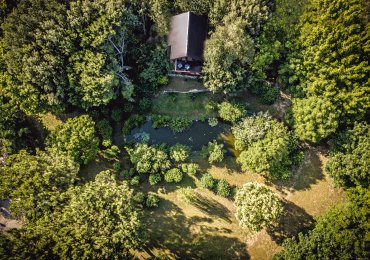-
Why we love it
For many kilometers along the lake, taking advantage of the pedestrian path that leads up to Castiglione del Lago Sant'Arcangelo and offering glimpses of great naturalistic interest - Travelling time: One day
- Difficulty: Hard
- Length: 71 km
- Total Elevation Gain: 440 m
- Way to travel: By Mountain Bike
- Cost: 0 €
- Our Advice: Given the mileage, the less fit, to avoid problems, may provide to divide the route into two fractions, even assuming a halfway in San Feliciano or Sant'Arcangelo.
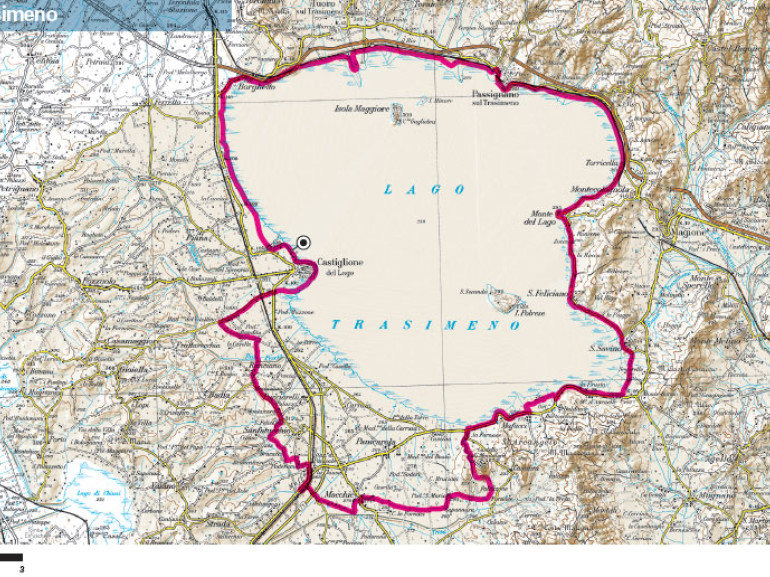
Technical Data Sheet
Start and finish: Castiglione del Lago
Distance: 70.5 km
Altitude difference: 440 meters
Difficulty: medium-difficult
Road surface: asphalt, gravel
Recommended bicycles: MTB, hybrid variant short
What to see: Castiglione del Lago, Tuoro sul Trasimeno, Passignano, Monte del Lago, Sant'Arcangelo, Castle Montalera, Trasimeno Park
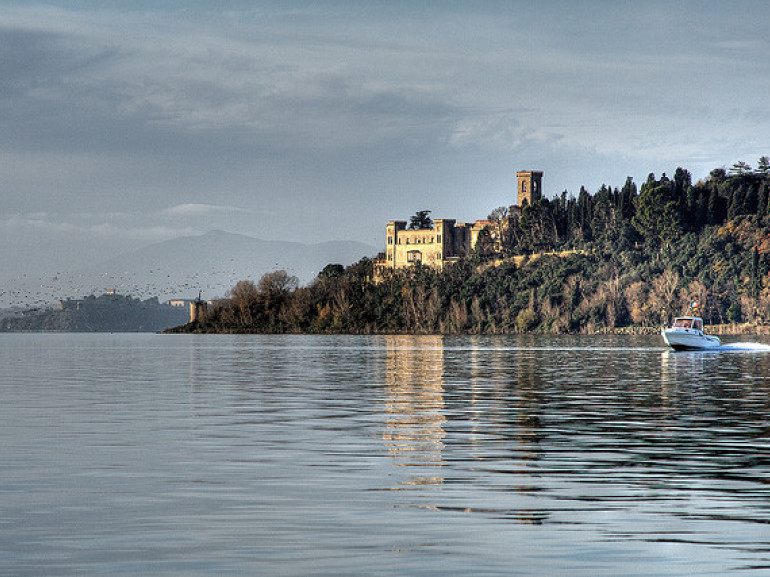
This route around the Trasimeno Lake runs for about half the mileage along the pedestrian path opened in 2005, which runs in part on its own premises and in part on the mixed. The project, still in the process, once brought to a conclusion will close the loop of the Trasimeno cycling almost exclusively on its own premises, on a dirt path without harshness.
The itinerary, which measures total 70.5 km, starts from Castiglione del Lago in the area of the former airport and, given the almost complete absence of roughness, can be covered without much effort, perhaps making stops in the villages, in the dining areas and at the many vantage points that are encountered along the way.
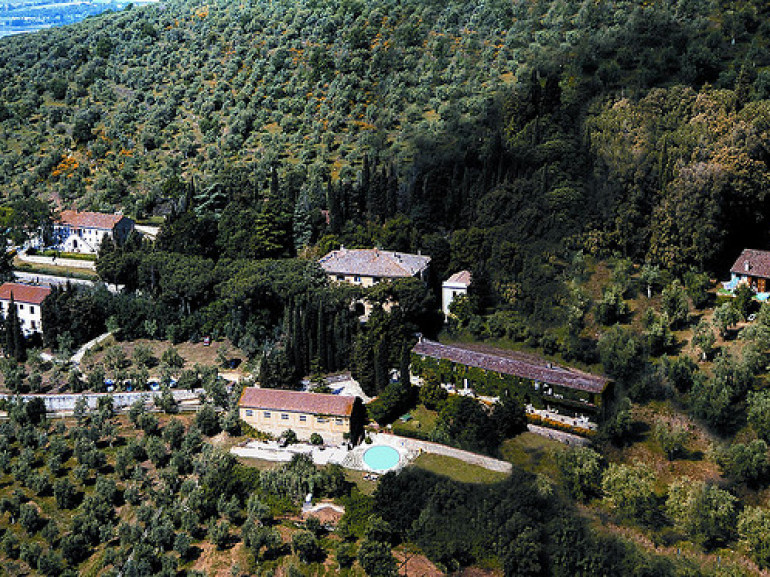
We reset the odometer at the entrance gate of the government property and begin to ride on the cycle path along the banks of the lake towards Tuoro. After going through re-naturalized area of considerable environmental interest, we remarket the tarmac to cross Borghetto (km 8.9) and resume the path about a kilometer later. Here the path literally touches the shore of the lake and winds through a dense forest, offering coolness in summer.
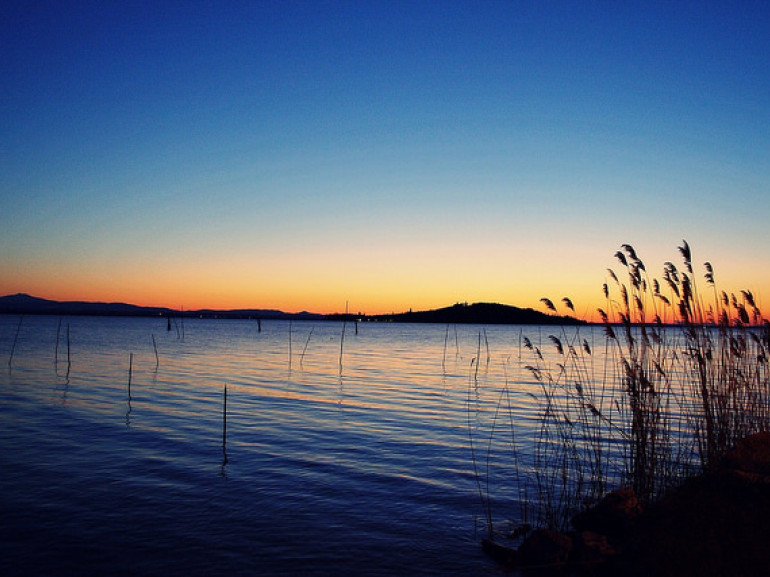
Outside the wood, the route runs close to the railway embankment, coming soon to Lido di Tuoro (km 14.7), where you can refuel with water and food. Once in Passignano the track is interrupted again, "forcing" to cross the pretty town along the lakeside to beyond the dock, past which, at 21.8 km, at the crossing, we take the track that joins the railroad until the village of Torricella, where we put temporarily on the Provincial rode for San Feliciano (km 26.5).
We overcome this ancient fishing village, enjoying the hills covered with olive groves and dotted with old farmhouses, and we continue in the direction of San Savino, continuing to alternate some stretches in your seat with other paved road.
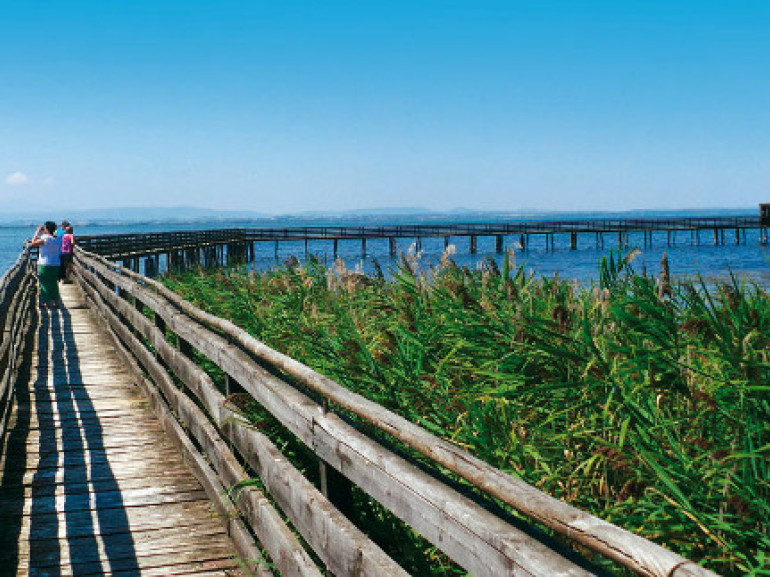
Less than a kilometer after the "La Valle" Oasis (nature center run by Legambiente, where you can observe the ecosystem of the lake in all its aspects) turn right and take the dirt road that leads us in about 3 km in places the Frusta, where upon ending the pedestrian path.
We continue to the right on the Statal rode (attention to traffic) to Sant'Arcangelo and at kilometer 45, at an intersection, we have two options: the first (shortest), continuing along the main road, and hence traffic, there back to the starting point of Castiglione del Lago in about 13 km; the second, that we will follow, although there away from Lake Trasimeno, passing through the countryside of the fractions of Casalini, Stains and San Fatucchio, reaching the capital city after 27 km, however, offers us beautiful rural views.

In this case we will have to face the short climb that leads to the foot of the castle of Montalera, fortress built in the twelfth century, it surrounded by oaks and oaks, which is still impressive, with crenellated towers Guelph, defensive walls, the remains of the moat and the drawbridge. The residential complex has been transformed into a magnificent Renaissance palace.
Once past the only real harshness of the route, proceed between roads or dirt that stream down the fields, tapping centers Macchie and San Fatucchio, before reaching Vitellino (65.4 km), near Castiglione.
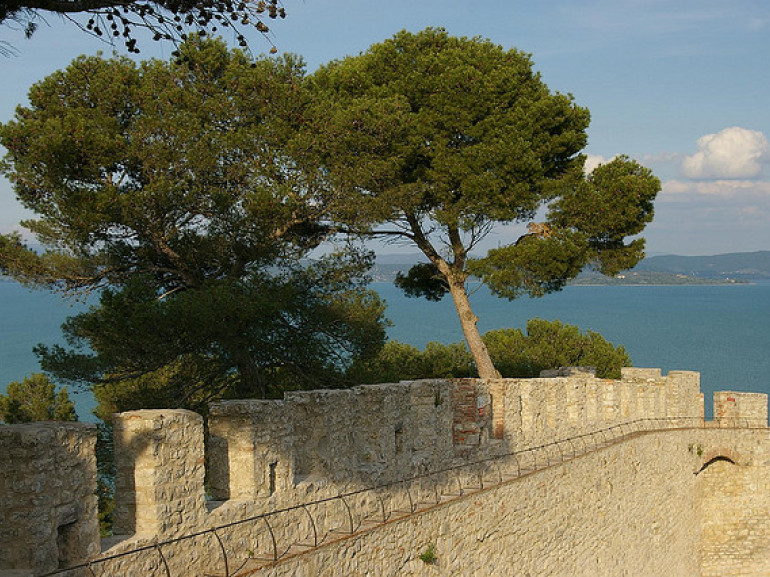
From here we turn right and we remarket the municipal road for Castiglione del Lago coming after about 2 km to a roundabout, beyond which is a prominent street of the lakeside. And 'this is the best way to return to the starting point, it will not be difficult to trace, following the bike path that runs alongside the scenic road over the lake and leaving on the left the perched village of Castiglione.
5 reasons to take the bike tour:
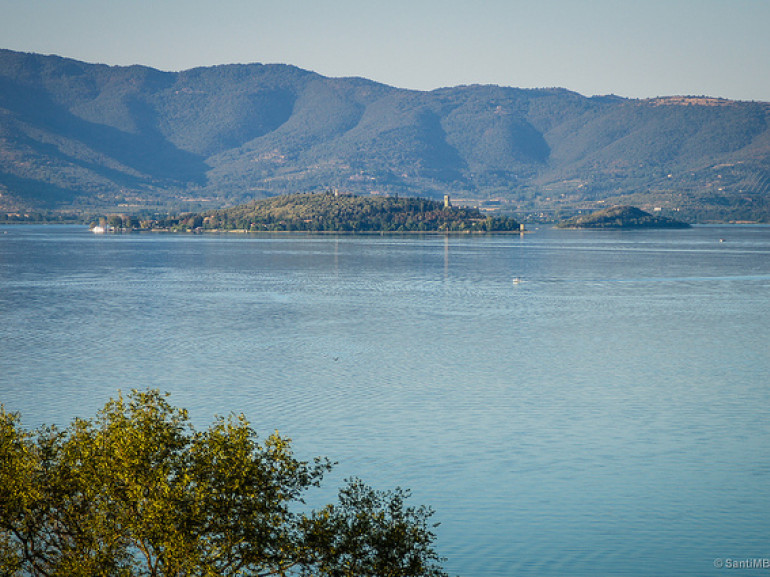
1. For the beauty of the entire area bordered by Trasimeno Lake, the fourth largest lake in Italy by extension. Having been declared Regional Park for its great naturalistic importance, nestled between rolling hills covered with olive groves and cultivated plains, it is a popular destination for foreign tourists.
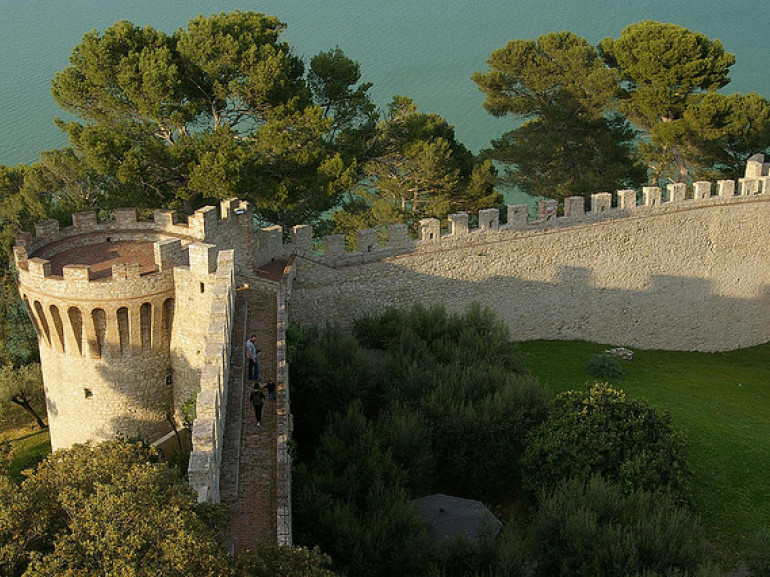
2. Castigione del Lago main town of the Trasimeno and the town of great beauty. The old town, with its medieval walls and three entrance doors, is worth a stop and a thorough examination, also because of the beautiful view it offers on the lake Trasimeno.In the major cities are the Rocca del Leone fortress pentagonal of medieval origin, which is one of the best examples of military architecture in the region, and the Palazzo della Corgna, elegant aristocratic residence of nature renaissance, built by Ascanio della Corgna in 1560 to a design by Vignola or Galeazzo Alessi.
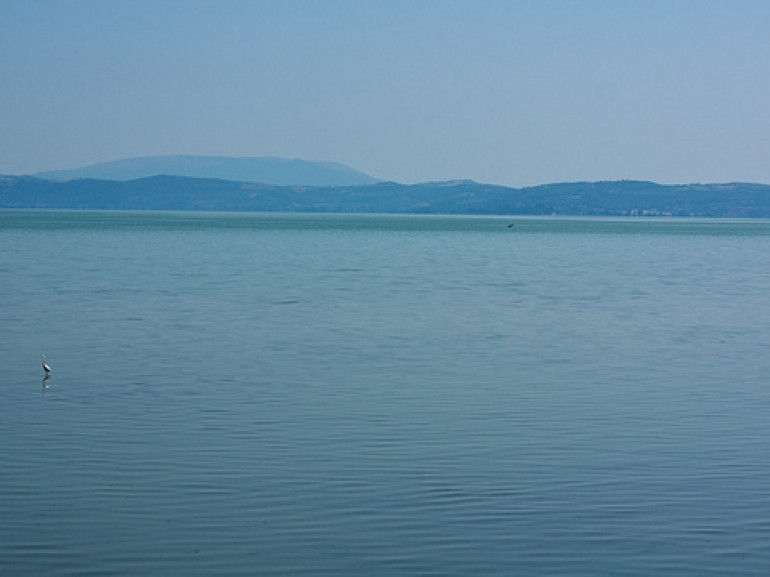
3. Do not miss Tuoro the historical path of the "Battle of Trasimeno" in 217 BC between Romans and Carthaginians, which reconstructs the important phases of the defeat of the Roman army against the Carthaginians of Hannibal.
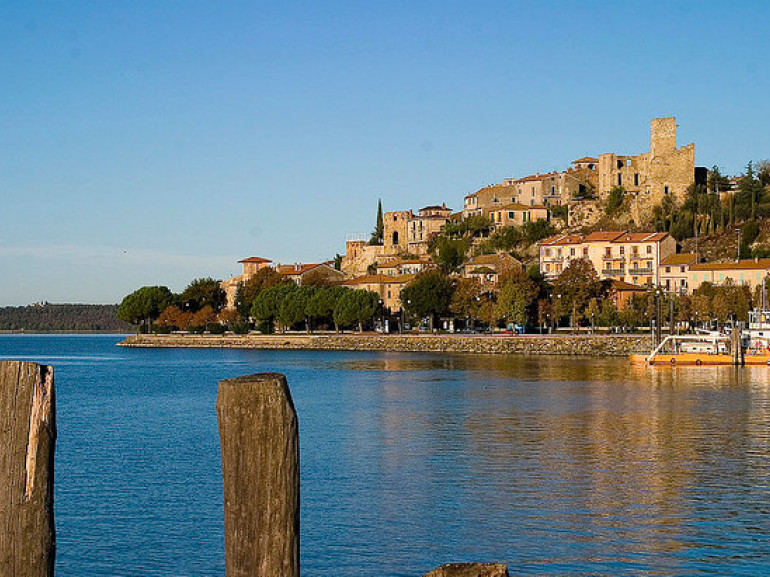
4. Do not miss Passignano, which still retains its appearance of a fortified village protected by walls and by Rocca. Among the buildings of artistic value are reported the church of St. Christopher, the fifteenth-century church of San Rocco, the church of San Bernardino and the Oratorio di San Rocco.
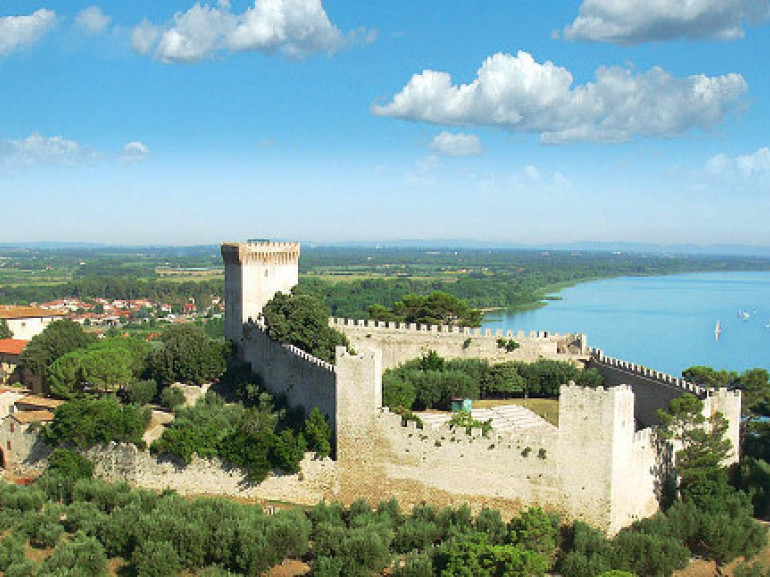
5. Last but not least, in Magione there is the Castle of the Knights of Malta, one of the most beautiful villages, characterized by a square with circular towers. The current structure, built on the core of a hospice founded in the twelfth century by the Knights of Jerusalem, is the result of an expansion of the existing mansion which also incorporated an ancient Benedictine abbey of the twelfth century, which is supposed to have been the seat of the Templar.
Cover photo: View of the Trasimeno Lake, photo by Guðskraftur via Flickr

